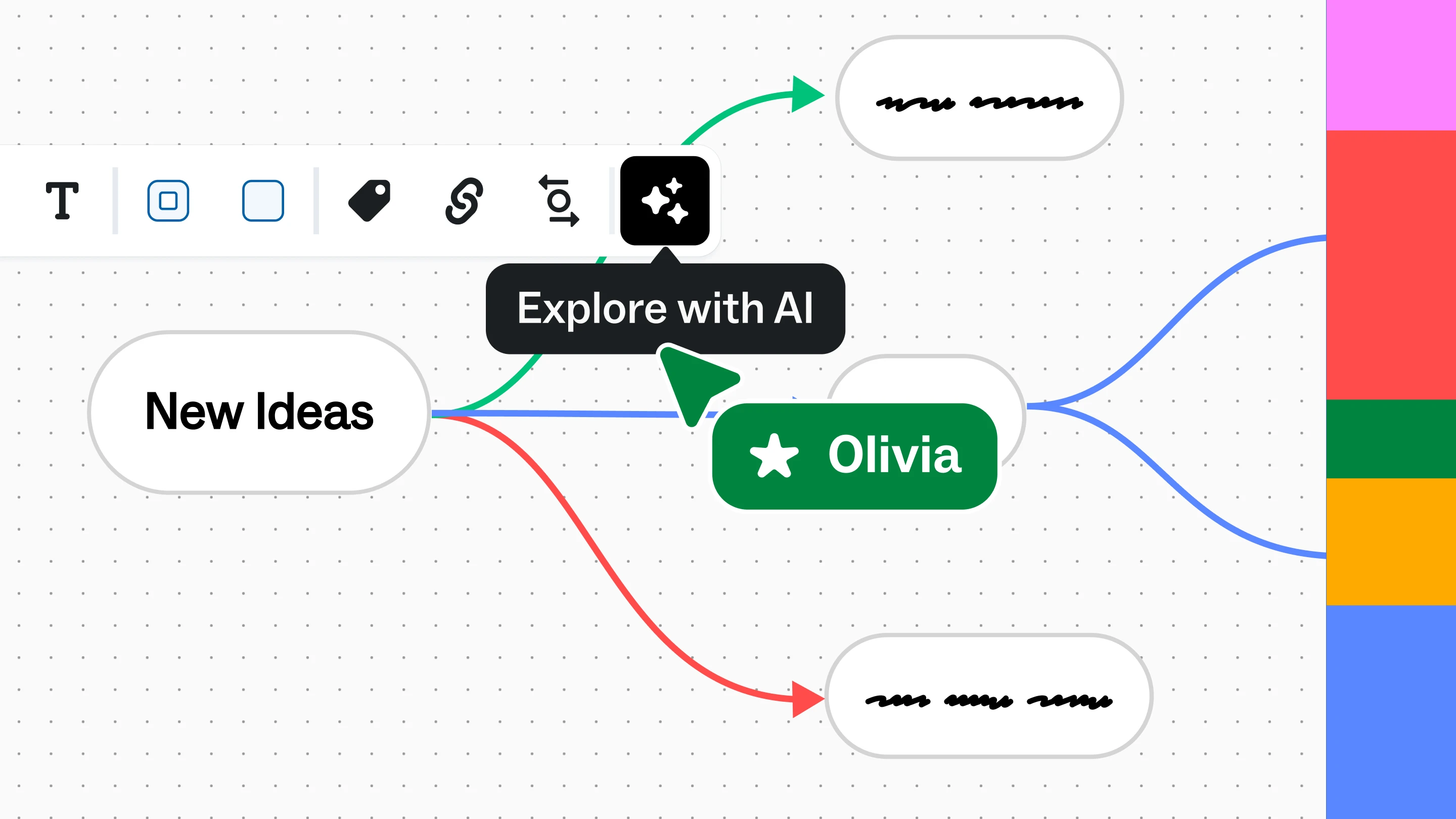Here at MURAL, we practice what we preach. Our ever-growing team is distributed across the world. We stay effective by using a core stack of collaboration software in a consistent way. MURAL, of course, is one of those tools. It lets us visualize our collective thoughts, keeping everyone on the same page on a daily basis.
For instance, each team has their own planning murals. These are used regularly — often daily — to show progress. Anyone in the company can see a team’s status at a glance. Using MURAL also opens up collaboration so everyone can contribute and comment.
We’re not alone in our frequent use of MURAL. For instance, McBeard, a leading media strategy firm in Los Angeles, relies on MURAL to manage the workflow of their campaigns. Each project at McBeard is set up with a series of resources, like a dropbox folder with a common naming convention. Creating a mural for each project is part of that.
Teams at McBeard then map out media campaigns and, using the commenting feature in MURAL, communicate directly on the content. Learn more about how McBeard uses MURAL in this webinar.

5 everyday uses of MURAL
From our own use and from observations of others, here’s a collection of regular uses of MURAL.
Stand-Ups
In an increasingly hybrid world, stand-ups are a great way to make sure your team is getting their work done and staying in communication. As I've often said, work isn't a place you go, it's a thing that you do. By leveraging visual collaboration in daily stand-ups you can easily capture activity and visualize it for others to see whether everyone is in the same room or not. For instance, our Customer Success team uses a format found in the template, below.
Each team member has a unique color and can organize their work for others to see. In a conference call, we go around and have each person discuss their weekly activities for 5 minutes or less each.

🚀 PRO TIP: Use the LUMA Institute's Ultimate Team Stand-Up template to quickly get your meetings on track and efficient.
Meeting Notes
Video calls create a sequential style of interaction: only one person can talk at a time. With short attention spans for remote participants, this leads to a lack of focus and ultimately to multitasking.
Having a mural open for each meeting lets everyone participate in the call, even if they aren’t speaking. You can also add links and resources others may need, as well as get the action steps mentioned in the call done. Why wait until afterward to check off your items in your to-do list? Using MURAL for meetings not only increases engagement, it accelerates your team's ability to coordinate and get things done in real time together.
For instance, the UX team at MURAL holds regular meetings to discuss designs and issues and upcoming projects. MURAL lets each person capture notes from the meetings, along with images and comments from others.

🚀 Pro Tip: Want to use MURAL but don't know where to start? Check out our templates page for hundreds of templates jump-start your next collaboration session.
Mind Mapping
We all get stuck solving problems in our daily work. Sometimes it’s hard to grasp all of the parts of an issue at once. Mind mapping is a proven way to help you get unstuck quickly, getting all of your thoughts out visually to help you think through the toughest challenges.
Our brains are actually hardwired to think visually. Consider what world-renown neurosurgeon Anjan Chatterjee had to say about the power of visual thinking when we interviewed him in 2016. He remarked that:
“We have a limited working memory; we can only hold a few bits of information in mind at any one time. Externalizing them offloads working memory demands, and allows us to see relationships and combinations of relationships. An external spatial display compensates for an internal capacity limitation.”

MURAL's Facilitation Superpowers™ are a great way to get your meetings more productive whether you're doing quarterly planning, brainstorming, or mind-mapping.
Mind maps can either be a collaborative exercise, or you can create one on your own. We find mapping out all of your thoughts in one place helps you solve problems better in general.
🚀 Pro Tip: Use our Mind Map Template to quickly solve problems together or as a team.
Retrospectives
Retrospectives are a key part of Agile techniques. After each Sprint (usually 2 weeks long), the team comes together to review how well they performed. Each member of the team responds to three basic questions: What worked well? What did not work well? How do we improve going forward?
Learning is a key part of team collaboration, and retrospectives give project teams a chance to reflect on their work and recent past performance. When teams are co-located, retrospectives are typically done on a whiteboard or flipchart with sticky notes. Distributed teams can easily use MURAL to capture this activity.
You’ll find a Framework for retrospectives built right into MURAL. Just click into Frameworks on your tool pane, click Agile, then drag it out to get started. (They’re not just for Agile, by the way. You can a retrospective for any project or effort!)

🚀 Pro Tip: Gather valuable feedback about a recent project or campaign with our Product School certified Retrospective template.
Events and General Planning
Many people use MURAL to plan events, everything from small meet ups to full-blown conferences. Set up a mural in advance and add to it as the planning of your event progresses. You’ll find it becomes a central “information radiator” that a whole team can refer to. We've even heard of government agencies using MURAL to plan large-scale projects, including COVID-19 testing and vaccination pop-up sites.
Here at MURAL, we use visual collaboration in all of our in-person and virtual events. From local meet-ups to company-wide off-sites, we use murals to help keep all the necessary information about an event in one place so the stakeholders can move things forward, ideate, and check-off tasks asynchronously.
In early 2021 our go-to-market team put together a road-trip themed virtual event that leveraged murals both before, during, and after the three-day long event. From daily warm-ups and energizers to thorough presentations from our executive leadership, our FUEL 2021 GTM event was a great way to rally our sales and marketing teams around our big goals for the year.

We’ve even heard of people using MURAL for all kinds of personal event planning as well. Many use it for vacation planning. One customer used it to plan a move. Others have even planned weddings in MURAL. Why not?
🚀 Pro Tip: MURAL plans all of our virtual and in-person events in canvases. Learn more about our amazing 2020 virtual offsite and how you can use MURAL for your next event!
Want to get started with MURAL? Start your free trial now!






.png)




